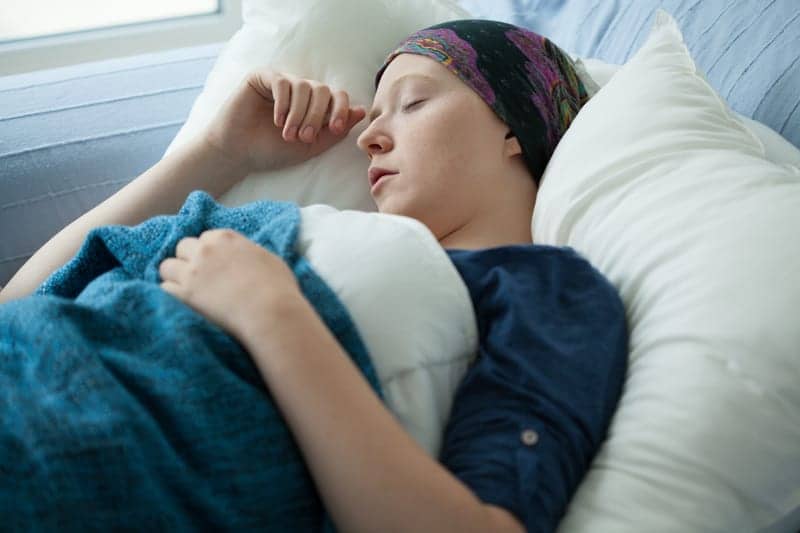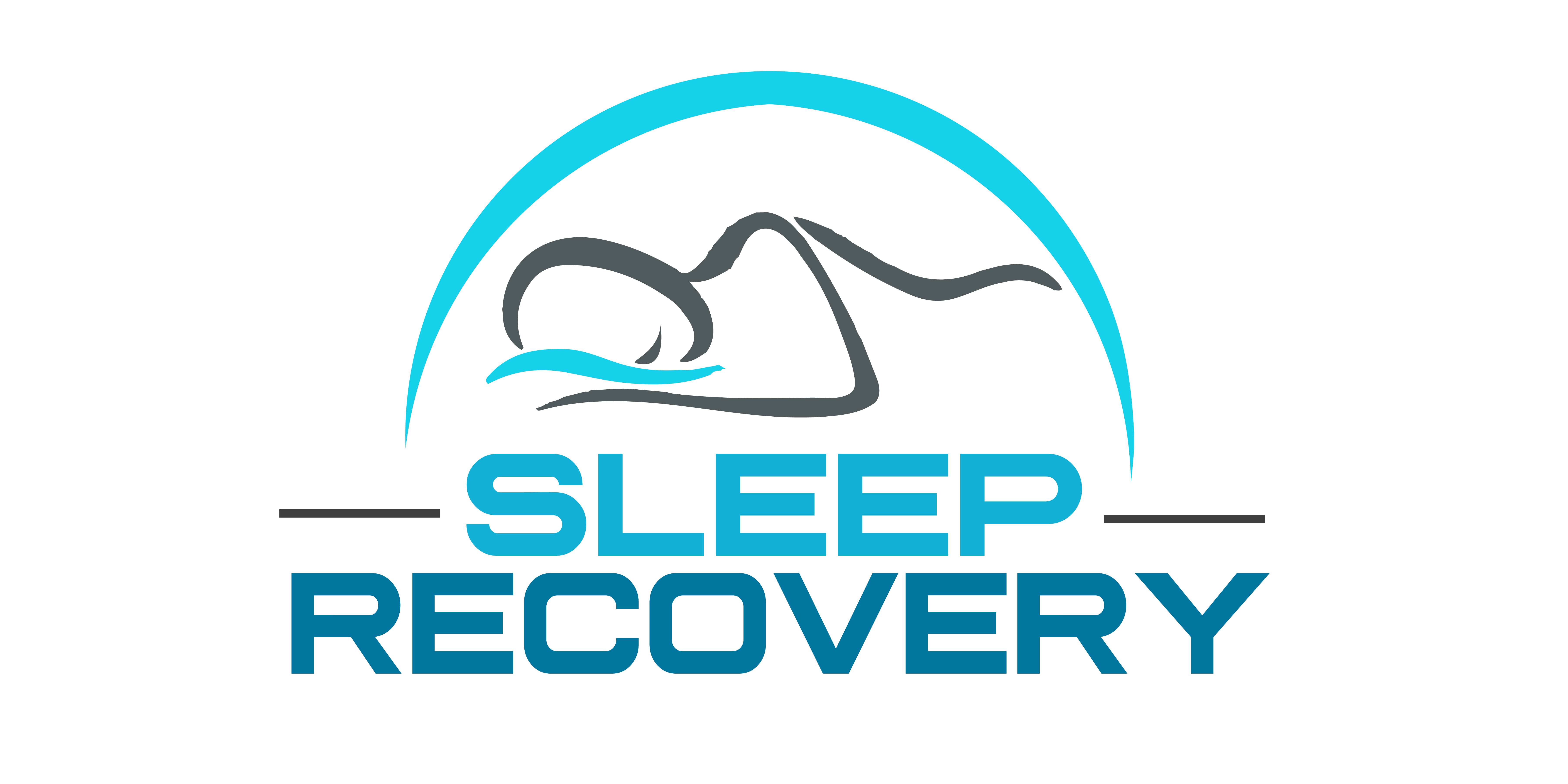Insomnia in Cancer Survivors: Neural Adaptations and Recovery Outcomes

Surviving Insomnia After Surviving Cancer
The scope of cancer survivorship and human sleep architecture presents unique challenges in sleep science. Postcancer insomnia manifests through distinct neurophysiological patterns that differ significantly from primary insomnia, requiring specialized therapeutic approaches and non-pharmaceutical treatment protocols.
Neurophysiological Signatures in Cancer Survivors
Dr. Eva Rames Nissen‘s research at AARHUS University has identified specific EEG patterns unique to cancer survivors. Using high-density electroencephalography and advanced spectral analysis, her team has documented persistent alterations in sleep architecture that extend well beyond the active treatment phase.
Adult Survivor Neural Patterns
Postcancer sleep architecture demonstrates several distinctive characteristics:
– Modified delta wave morphology in frontal regions
– Altered spindle density during NREM sleep stages
– Disrupted theta-gamma coupling during REM transitions
– Enhanced beta-band activity during sleep onset
“These patterns suggest fundamental reorganization of sleep regulatory networks,” explains Dr. Nissen. “The neural signatures we observe indicate persistent modifications to sleep architecture that often remain stable for years post-treatment.”
Pediatric Survivor Characteristics
Children who have survived cancer present unique neural adaptations:
– Enhanced slow-wave activity in temporal regions
– Modified sleep spindle characteristics
– Altered arousal thresholds
– Distinct dream-state neural activity
Dr. Irtiza N Sheikh’s longitudinal studies at MD Anderson Cancer Center reveal critical differences between pediatric and adult survivors: “Children’s neural plasticity allows for more rapid adaptation, but also presents unique challenges in sleep architecture restoration.”
Dream Pattern Differentials
The analysis of dream experiences between cancer survivors and non-cancer populations reveals fascinating distinctions. Dr. Elena Kowalski’s dream research laboratory has documented specific variations:
Cancer Survivor Dream Characteristics
– Enhanced emotional content processing
– Modified narrative structure complexity
– Altered temporal sequencing
– Unique memory integration patterns
“Cancer survivors often demonstrate distinctive dream patterns that reflect their neural adaptations,” notes Dr. Kowalski. “These differences manifest in both dream content and underlying neural activity.”
The Sleep Recovery Program for Cancer Survivors
Recent advances in neurofeedback applications have led to the development of specialized protocols within The Sleep Recovery Program, specifically designed for cancer survivors. Dr. Jefferey Wilson’s work with Sleep Recovery has pioneered targeted interventions based on individual neural signatures.
Protocol Components
The program incorporates multiple therapeutic elements:
– Amplitude-based neurofeedback targeting specific frequency bands
– Alpha Theta frequencies associated with trauma
– Amplitude anomalies across the global EEG spectrum
– Cortical fear-based high beta connected to relapse ideation
Therapeutic Outcomes
Clinical trials demonstrate significant improvements:
– 47% reduction in anxiety
– 78% enhancement in overall sleep quality
– 82% improvement in daytime alertness
– 75% increase in mood and mental positivity
Personal Narratives: The Journey to Sleep Recovery
Madeline Aubury, 45, Breast Cancer Survivor:
“After completing treatment, sleep became my greatest challenge. The Sleep Recovery Program helped me understand my negative perception of my sleep. Neurofeedback sessions taught me to recognize and work with my brain’s new rhythms. My sleep quality has improved dramatically, and I’m finally experiencing restful nights again.”
Karen Bassen, 52, Lymphoma Survivor:
“The program’s approach to addressing cancer-specific sleep disruptions was beneficial. Understanding how cancer had altered my brain’s sleep architecture helped me develop more effective coping strategies. The combination of neurofeedback and cognitive techniques has restored my ability to maintain healthy sleep patterns.”
Josephina Swartzman, 12, Leukemia Survivor:
“Sleep was bad after my chemo ended. The special program for kids helped me understand why my brain was different at night. Now I can sleep better and am no longer tired at school.”
Frequently Asked Questions
1. How does cancer treatment permanently affect sleep architecture?
Dr. Wilson explains: “Cancer treatments can modify neural circuits involved in sleep regulation, leading to persistent changes in sleep architecture. These modifications often require specialized interventions for optimal sleep recovery.”
2. What makes sleep patterns different for pediatric cancer survivors?
Research indicates that children’s enhanced neural plasticity allows them to adapt rapidly to sleep interventions. However, the approach must be carefully tailored to their developmental stage and specific cancer history.
3. How long does it typically take to see improvements with The Sleep Recovery Program?
Clinical data suggests that most survivors begin experiencing measurable improvements within 2-4 weeks of consistent participation, and the enhancement continues over 6 months.
4. Are dream pattern changes permanent in cancer survivors?
New research indicates that while some dream characteristics may persist, therapeutic intervention can help optimize dream-state neural activity for better sleep quality.
Future Research Directions
Current investigations focus on several key areas:
– Neural circuit mapping specific to cancer survivor sleep patterns
– Development of targeted neuromodulation protocols
– Integration of artificial intelligence in sleep pattern analysis
– Novel therapeutic approaches for pediatric survivors
Conclusion
Understanding the unique sleep architecture of cancer survivors continues to yield insights into both neural adaptation and recovery potential. As research advances, new therapeutic approaches emerge, offering hope for improved sleep quality and enhanced quality of life for cancer survivors of all ages.
References:
- Prevalence of Sleep Disturbances in Pediatric Cancer Patients and Their Diagnosis and Management. https://pmc.ncbi.nlm.nih.gov/articles/PMC8700400/#:~:text=Regardless%20of%20cancer%20type%2C%20sleep%20changes%2C%20such%20as%20daytime%20sleepiness,pediatric%20cancer%20patients%20and%20survivors.
-
Interventions for insomnia in cancer patients and survivors-a comprehensive systematic review and meta-analysis. https://pubmed.ncbi.nlm.nih.gov/38781520/
-
Insomnia in elderly cancer survivors–a population-based controlled study of associations with lifestyle, morbidity, and psychosocial factors. https://pubmed.ncbi.nlm.nih.gov/20632038/
- The Effect of EEG Biofeedback on Reducing Postcancer Cognitive Impairment. https://journals.sagepub.com/doi/10.1177/1534735413477192
The scope of cancer survivorship and human sleep architecture presents unique challenges in sleep science. Postcancer insomnia manifests through distinct neurophysiological patterns that differ significantly from primary insomnia, requiring specialized therapeutic approaches and non-pharmaceutical treatment protocols.
